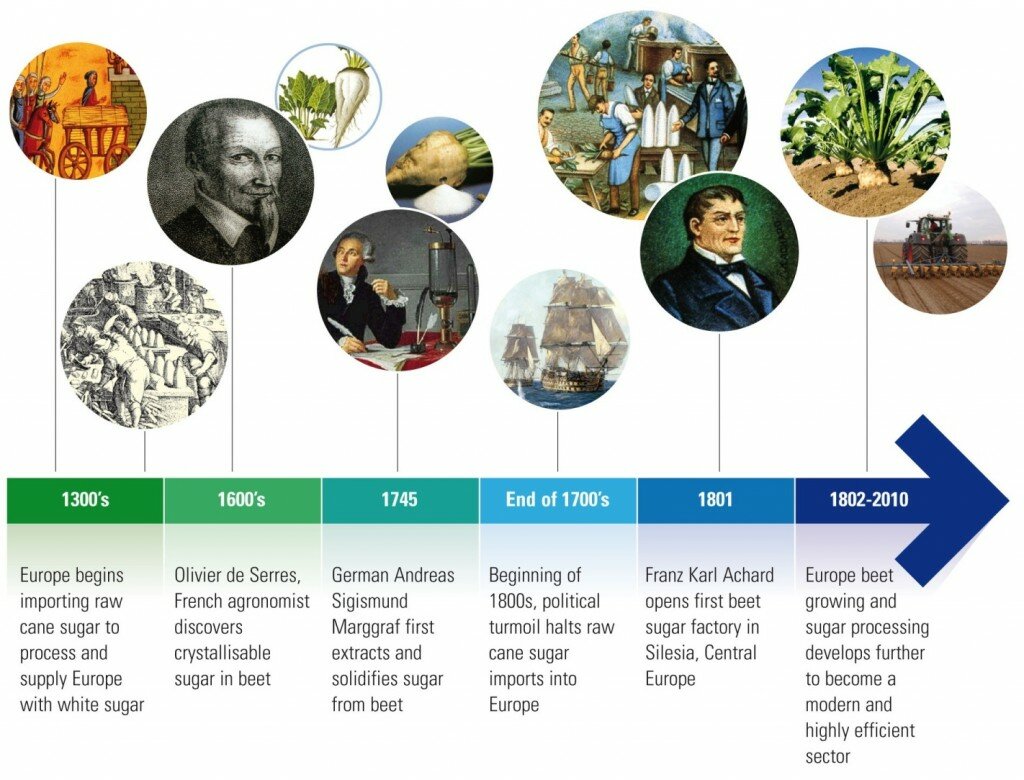Centuries ago, well before a sugar industry first saw the light of day in Europe, sugar was already a food in great demand. In the middle ages, honey above all was used to provide a sweet taste to food. Later, sugar refineries were built in Europe, processing imported raw cane sugar into white sugar. In this way, sugar cane came to be the first plant to supply the European sugar market with sugar.
The work to extract sugar from beets was started at the beginning of the 17th century by Olivier de Serres, a French agronomist. De Serres was the first to work on the extraction of crystal sugar from beets, but without success. In 1745, the German chemist Sigmund Marggraf became the first to extract and solidify the juice of this plant. Forty years later, Franz Karl Achard took up Marggraf’s work once more. He improved beet cultivation and in 1802 opened the first experimental factory, with such satisfactory results that several more factories were built in Silesia and Bohemia.
The political events at the end of the 18th century and the beginning of the 19th – especially the uprisings in the French overseas territories and the Continental System blockade – paralysed the import of cane sugar to the European Continent. Substitutes were therefore sought. Fruit, honey, grapes and roots were all tried in turn. The beet sugar factories in Silesia and Bohemia were seized upon in France and elsewhere as the solution to continental Europe’s sugar supply problems.
When the continental blockade was lifted, cane sugar from the colonies flooded the markets once more. Faced with this competition, the once prosperous incipient beet-sugar industry collapsed: a large number of su gar factories were forced to close down after suffering substantial losses. Howe ver, this setback was only temporary. Men of talent in every country put all their efforts into reviving the beet-sugar industry. Slowly but surely, beet-sugar factories began re-emerging. And gradually the processing of beet became profitable. The beet-sugar industry progressively strengthened its position on the market through improved techniques, the construction of large production units and the selection of beet.
Today, the European sugar industry is a modern, high-performance sector that is essential for European consumers. Over the last 200 years it has constantly improved its technology and the quality of its prod ucts in line with consumer expectations. It also ensures respect for the envir onment throughout themanufacturing process and helps to maintain European agriculture through the growing of beet. The existence of a strong sugar in dustry within the framework of the common agricultural policy is a vital factor for the rural areas of the European Union.


